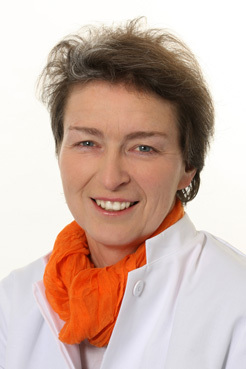
Brigitte Osswald
With more than 750,000 new pacemaker implantations and 250,000 first implantable cardioverter defibrillator (ICD) implantations performed worldwide, the relevance of lead extraction strategies becomes vital1.
Prophylactic indications for ICDs and issues like biventricular pacing being in favour of permanent right ventricular pacing in complete atrioventricular block encourage to place more than the standard number of leads. In addition, younger patient age at implantation and higher life expectancy contribute to a growing number of revisions. Furthermore, in most countries pacemaker implantation is not restricted to specialised institutions and therefore even technical or surgical technique dependent problems are one of the reasons for lead-related (re-)interventions.
In the past few years, lead integrity―in several mid-term implanted leads―requires a very careful consideration of benefit and disadvantage of lead extraction.
The limited predictability of lead extraction simplicity in the individual patient requires a straightforward procedure at facilities, according to the current guidelines for lead extraction2 “centralised centres” with accredited cardiac surgery and cardiac catheterisation programmes. In general, a more recent implantation date means a more simple lead extraction. However, there is no clear cut off point. One of the main issues during lead extraction is to stabilise the total lead body by at least guiding stylets or even better locking devices placed to the very distal end of the lead before the first pulling attempt. Once the inner lumen is disrupted or stretched, any further extraction technique becomes much more difficult and sometimes even impossible. If simple traction is insufficient, sheaths may be used to separate the lead body from the vascular system and/or myocardium.
There are no clear data on the superiority of mechanical vs. electrical or laser energy supplying sheath; since the variability in the amount of fibrous or calcified tissue around the lead bodies on one hand, and the differences in lead-related issues―concerning ease of lead removal―on the other hand are extremely difficult to compare. Results may be best if the technique with the highest personal experience is used. In this context, proctoring may help to establish a programme, but even the most experienced extractors undergo a learning curve.
The success rate is likely related to personal preference. Therefore, a general recommendation may be misleading. Although very high overall success rates are published by either method, there are some patients, where traction fails and neither mechanical or laser sheath can be successfully used. For the majority of these patients, minimal invasive open heart surgery offers complete lead and lead remnant removal. In patients with complex cardiac comorbidity, a primary open chest surgery according to the attempted surgical approach is indicated. Although each patient requires an individual weighing of aggressiveness and optimal approach, registries may help to identify specified risks for different methodologies.
In summary, despite the growing number of lead-related (re-)interventions, the “gold standard” in lead extraction, does not exist. The variability in general patient status, indication and complexity of implanted systems hampers a one-for-all strategy. Nevertheless, as done in most specialised centres, a step-wise increase in the aggressiveness of methods starting with simple tension over different kinds of sheath and finalising with a potential open heart procedure offers the safest treatment option. Simple lead traction and all kinds of sheath manoeuvres bear the risk for life-threatening complications which require immediate surgery often combined with circulatory support. In terms of quality assessment, registries on all consecutive patients requiring lead removal are desirable to get data for a more objective lead extraction strategy.
Brigitte Osswald, University of Düsseldorf, Germany
References
1. Mond HG, Proclemer A. The 11th World Survey of Cardiac Pacing and Implantable Cardioverter-Defibrillators: Calendar Year 2009 – A World Society of Arrhythmia’s Project. PACE 2011; 34:1013-27
2. Wilkoff BL, Love CJ, Byrd CL, Bongiorni MG, Carillo RG, Crossley GH, Epstein LM, Friedman RA, Kennergren CEH, Mitkowski P, Schaerf RHM, Wazni OM. Transvenous Lead Extraction: Heart Rhythm Society Expert Consensus on Facilities, Training, Indications, and Patient Management. HeartRhythm 2009: 6; 1085-1104












